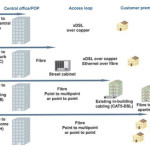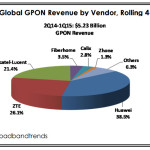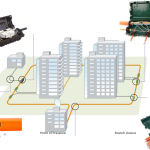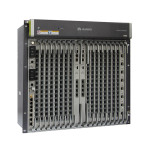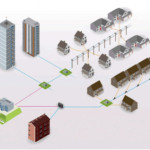PON architectures for FTTH deployments are currently based on passive optical splitters to distribute the bandwidth to each customer using fiber splitters providing ratios ranging up to 1:64 or even 1:128. The physical PON FTTH
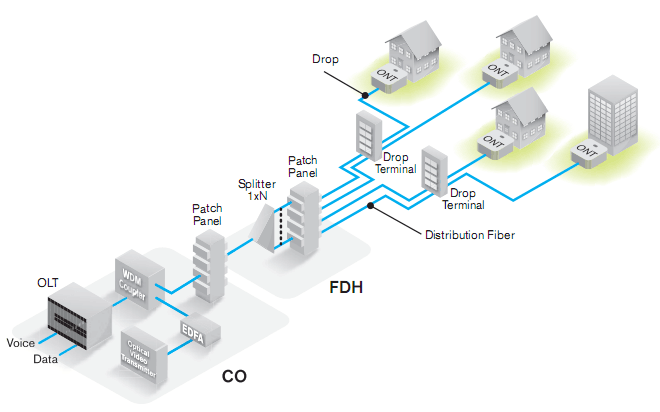
GPON TOPOLOGY
architecture typically supports the Ethernet protocol. PON network feeds a variety of optical network terminations (ONTs) or optical network units (ONUs). ONTs are usually dedicated to an individual end user.
An ONU typically is located in a basement or even on a curb-side and shared by a limited number of users. Voice, data and video services are distributed over appropriate transmission media within the customer premises from the ONU or ONT (e.g. using existing in-building copper cabling). There are different benefits for service providers that deploy PON architectures, although some of these reasons are becoming less interesting. Saving on fiber between the optical splitter and the central office or POP locations is the most significant aspect for PON FTTH deployments.
First, the fact that there is a dedicated optical interface per customer in a point-to-point scenario may imply that this architecture is inherently more expensive than an architecture sharing ports among a larger number of customers. Experience with a large number of projects, however, has shown that dedicated Ethernet ports are price-competitive given the greater expense of PON ports.
Second, assuming a 100 percent take rate of an FTTH offering, the POP for a PON architecture would have less than half as much equipment compared to Ethernet FTTH. But assuming realistic take rates, as discussed below, the difference disappears. This is due to the fact that already the first customer on a PON requires an optical line termination (OLT) port, and thus, the number of OLT ports cannot be reduced based on a lower take rate.
